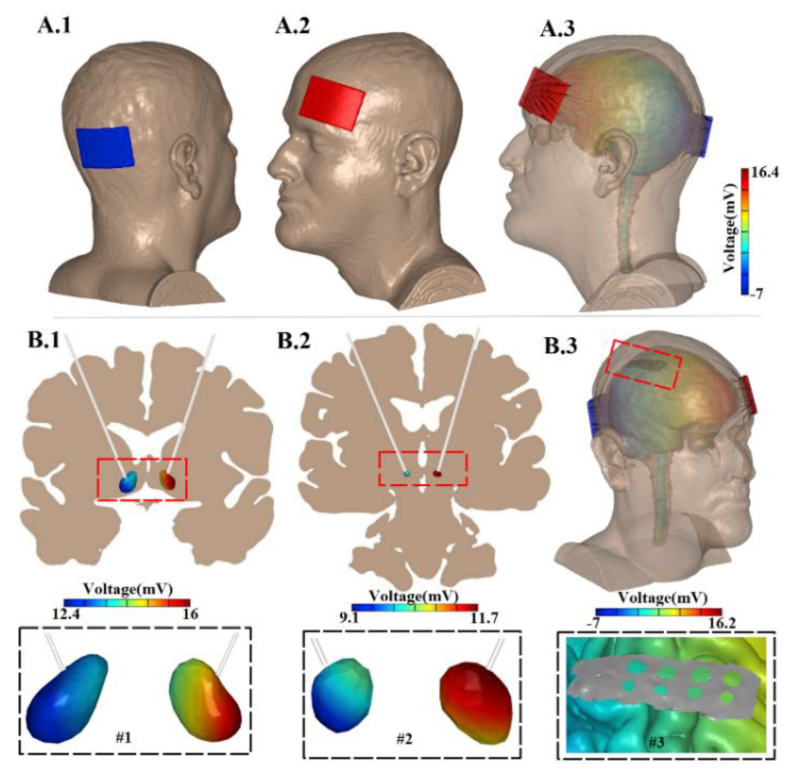Download: PDF published in Neuromodulation – DOI
Helena Knotkova, Alexa Riggs, Destiny Berisha, Helen Borges, Henry Bernstein, Vaishali Patel, Dennis Q. Truong, Gozde Unal, Denis Arce, Abhishek Datta, Marom Bikson
Abstract
Objectives
Non‐invasive transcranial direct current stimulation (tDCS) over the motor cortex is broadly investigated to modulate functional outcomes such as motor function, sleep characteristics, or pain. The most common montages that use two large electrodes (25–35 cm2) placed over the area of motor cortex and contralateral supraorbital region (M1‐SO montages) require precise measurements, usually using the 10–20 EEG system, which is cumbersome in clinics and not suitable for applications by patients at home. The objective was to develop and test novel headgear allowing for reproduction of the M1‐SO montage without the 10–20 EEG measurements, neuronavigation, or TMS.
Materials and Methods
Points C3/C4 of the 10–20 EEG system is the conventional reference for the M1 electrode. The headgear was designed using an orthogonal, fixed‐angle approach for connection of frontal and coronal headgear components. The headgear prototype was evaluated for accuracy and replicability of the M1 electrode position in 600 repeated measurements compared to manually determined C3 in 30 volunteers. Computational modeling was used to estimate brain current flow at the mean and maximum recorded electrode placement deviations from C3.
Results
The headgear includes navigational points for accurate placement and assemblies to hold electrodes in the M1‐SO position without measurement by the user. Repeated measurements indicated accuracy and replicability of the electrode position: the mean [SD] deviation of the M1 electrode (size 5 × 5 cm) from C3 was 1.57 [1.51] mm, median 1 mm. Computational modeling suggests that the potential deviation from C3 does not produce a significant change in brain current flow.
Conclusions
The novel approach to M1‐SO montage using a fixed‐angle headgear not requiring measurements by patients or caregivers facilitates tDCS studies in home settings and can replace cumbersome C3 measurements for clinical tDCS applications.

































